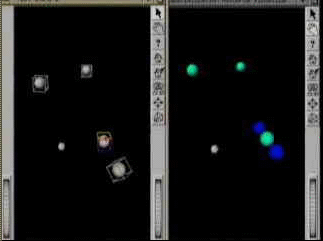 |
On the right side again, the
spatialization resource visualizer let us monitor the clustering algorithm. The dark
blue spheres are sources which are requested for spatialization. The
resource manager clusters sound sources to use resources (e.g.,
spatialization channels) efficiently. The light blue spheres represent
virtual sources which enbody one cluster.
|